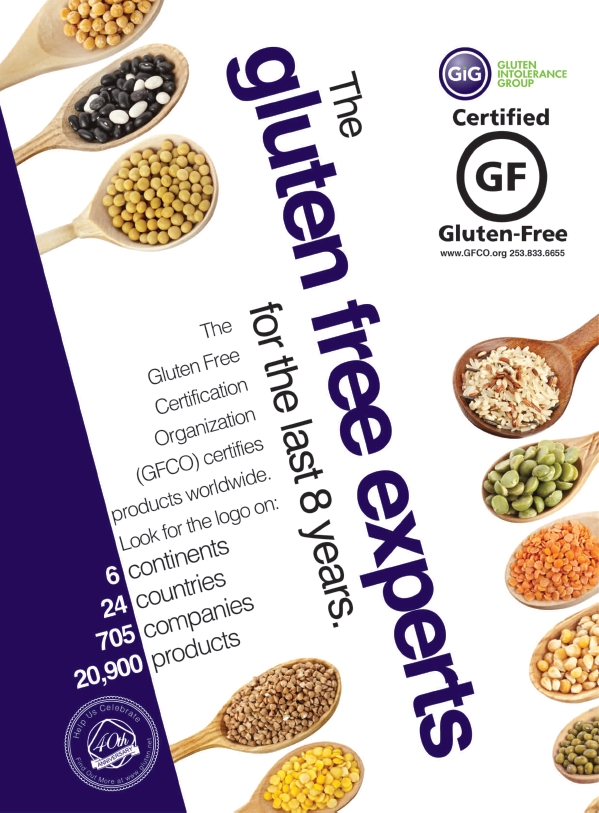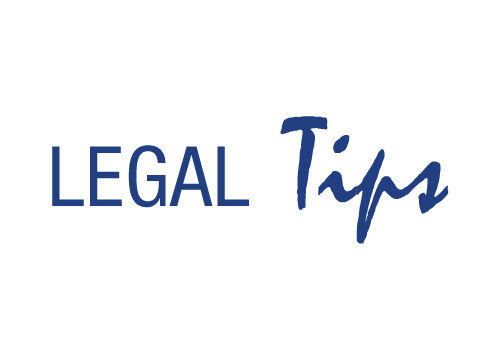Editor’s Note: This article is intended for information purposes only. Because state and municipal laws vary greatly, as do the circumstances of individual cases, readers are advised to contact an attorney for specific legal advice. © 2014 Scott C. Tips
“Any man who thinks he can be happy and prosperous by letting the American government take care of him, better take a closer look at the American Indian.” —Henry Ford
The law of unintended consequences is that unanticipated or unintended effects invariably result from human action, most often government action in the form of legislation and regulation. Economist Alex Tabarrok perhaps explained it best when he wrote, “The law of unintended consequences is what happens when a simple system tries to regulate a complex system. The political system is simple, it operates with limited information (rational ignorance), short time horizons, low feedback, and poor and misaligned incentives. Society in contrast is a complex, evolving, high-feedback, incentive-driven system. When a simple system tries to regulate a complex system you often get unintended consequences.”1
Everywhere we turn, we can see examples of this Natural Law in operation: The decades-long “War on Drugs” has resulted in more drugs (and crime) than ever; the decades-long “War on Cancer” has seen cancer rates rise, not fall; and the nearly decades-long “War on Terrorism” has seen terrorism spread like a stain on the planet. Even granting the dubious premise that any of these wars were started with the best of intentions, they have clearly failed despite the billions of dollars thrown down their rat holes.2
Scratch a Subsidy, See a Special Interest
Government subsidies are another case in point. Two main types of government subsidies come to mind: consumer and corporate. Consumer subsidies are those like the food-stamp program. Corporate subsidies are those like the bailout programs, for bankrupt and nearly bankrupt corporations and banks, and crop subsidies.
Federal crop subsidies, which began in the early 1920s, were intended to protect farmers from losses due to poor harvest years and natural disasters. A noble if misguided program at its start, it has inevitably degenerated into a very profitable corporate welfare program for a few select crops produced by huge agricultural companies and cooperatives.
Independent statistics for the most recent years show that for the 18-year period from 1995 to 2012, the federal government paid out close to $84.5 billion in corn subsidies, $35.5 billion in wheat subsidies, $27.8 billion in soybean subsidies and billions more in other subsidies.3 In all, during that period, the subsidy payout was $292.5 billion.4
However, if you subtract from consideration the  62% of farmers who received no subsidies at all, and you understand that only 10% of the “farmers” received 75% of the subsidies, the true picture emerges. Looking even deeper into the rat hole, one finds that all too many of these recipients pocket their checks at addresses in such “farmland” areas as San Francisco, Memphis, Fort Worth and Phoenix.5 Wealthy absentee landowners and mega-farms owned by corporations are the main beneficiaries of this program. These include Fortune 500 companies such as John Hancock Life Insurance Co. ($2,849,799), the International Paper Co. ($1,183,893) and Chevron/Texaco ($446,914) as well as such celebrity hobby farmers as David Rockefeller ($553,782) and Ted Turner ($206,948).6
62% of farmers who received no subsidies at all, and you understand that only 10% of the “farmers” received 75% of the subsidies, the true picture emerges. Looking even deeper into the rat hole, one finds that all too many of these recipients pocket their checks at addresses in such “farmland” areas as San Francisco, Memphis, Fort Worth and Phoenix.5 Wealthy absentee landowners and mega-farms owned by corporations are the main beneficiaries of this program. These include Fortune 500 companies such as John Hancock Life Insurance Co. ($2,849,799), the International Paper Co. ($1,183,893) and Chevron/Texaco ($446,914) as well as such celebrity hobby farmers as David Rockefeller ($553,782) and Ted Turner ($206,948).6
And, as playwright George Bernard Shaw once wrote, “a government that robs Peter to pay Paul can always count on the support of Paul.” So, too, can the many congressmen who vote to maintain these subsidies count on the continued support of those subsidized or else themselves receive farm subsidies.7
The Circle of Life, or Is it Death?
Eligibility for a federal food subsidy is based upon the crop grown. Over 90% of all subsidies are paid for just five crops: corn, wheat, cotton, soybeans and rice. The vast majority of crops—such as almost all fruits as well as vegetables and nuts—are ineligible for subsidies. The only fruit to receive subsidies has been apples, which at $689 million given in subsidies since 1995 equals less than 2% of the subsidies paid to corn growers alone during the same period.8 So, federal subsidies actively lower prices for grains and therefore those products made or raised with grains (soft drinks, poultry and cattle).
In the United States, subsidized corn is mostly genetically modified and is processed into, among other things, biofuels and high-fructose corn syrup (HFCS), which in turn is nearly ubiquitous in processed foods. Corn is also mixed with soybeans (another subsidized crop) and fed to poultry and cattle, which we then consume.
This explains the paradox of the Standard American Diet—that processed meals and junk-food diets are often noticeably cheaper for consumers than are healthier, more basic diets. Processed foods are much more abundant and affordable, especially for low-income families. Out of necessity, low-income families preferentially select less-nutritious foods simply to enable their money to stretch.
These “food insecure” families are much more common than one might think. Even in rich America, the number of “food insecure” persons is now 48 million.9 And these families are major purchasers of subsidized foods, including HFCS-rich soft drinks, chicken dishes and grain-based desserts. Government subsidies are directly behind the poor diets and obesity epidemic in the country today. Again, with limited budgets, consumers are pushed toward subsidized fast foods and illnesses.
Yet, even families with larger food budgets find themselves inexorably drawn into eating a processed-food diet, full of HFCS and GMO grains. The subsidies encourage most food companies to include HFCS in their products and to use GMO grains as well. If your shopping experience is similar to mine, then you can hardly find any commercial food product that doesn’t have some degree of HFCS in it, from jams and breads to salad dressings, drinks and even infant formulas. And, for your health, HFCS is one of the worst sweeteners anyone can consume, causing obesity, diabetes and often tainted with mercury.
Americans’ dietary choices are being perversely twisted and skewed by these food subsidies that favor unhealthy foods by making them cheaper and therefore ubiquitous. Other than simple rigid nutritional self-discipline and education, what can consumers do about this illness-inducing system?
The Solution
The solution to this particular problem seems obvious: End the subsidies! Yet, we all know that 80-year-old government programs with vested interests are as difficult to end as are rumors and news reports about Justin Bieber. If only!
Still, it can be done, as the experiences of both Australia and New Zealand have shown. One study, which extensively researched food subsidies, noted that, “[a]n interesting example of farmers’ prospering without subsidies is New Zealand. In 1984, New Zealand ended its farm subsidies, which was a bold stroke because the country is four times more dependent on farming than is the United States. The changes were initially met with fierce resistance, but New Zealand farm productivity, profitability, and output have soared since the reforms. New Zealand farmers have cut costs, diversified land use, sought nonfarm income, and developed niche markets, such as kiwifruit. The Federated Farmers of New Zealand argues that that nation’s experience ‘thoroughly debunked the myth that the farming sector cannot prosper without government subsidies.’ That myth needs to be debunked in the United States as well.”10
The ultimate democracy is “dollar democracy,” where the consumers’ buying choices reign supreme. Each and every dollar spent or not spent on a product is a “vote” for or against that product. So, vote with your pocketbook for healthy foods, which in the long run is less expensive than having to deal with illnesses  that could have been easily prevented. And demand that your legislators end this twisted corporate-welfare system that lines others’ pockets but has caused you to have to spend more on food simply to maintain your health. WF
that could have been easily prevented. And demand that your legislators end this twisted corporate-welfare system that lines others’ pockets but has caused you to have to spend more on food simply to maintain your health. WF
A graduate of the University of California at Berkeley Law School, Scott C. Tips currently practices internationally, emphasizing Food-and-Drug law, business law and business litigation, trade practice, and international corporate formation and management. He has been involved in the nutrition field for more than three decades and may be reached at (415) 244-1813 or by e-mail at scott@rivieramail.com.
End Notes
1 Tabarrok, Alex, “The Law of Unintended Consequences,” Marginal Revolution, Jan 24, 2008, at: http://marginalrevolution.com/marginalrevolution/2008/01/the-law-of-unin.html#sthash.faIKBHEG.dpuf.
2 Marion Nestle, in her well-argued article, “Regulations do change behavior,” Food Politics, Sept 12, 2012, (at www.foodpolitics.com/2012/09/regulations-do-change-eating-behavior/), makes the contrary case, contending that regulations concerning food do work. Unfortunately, she does not address the why of such regulations. Why are they even necessary in the first place? But for other government regulations that encourage bad eating habits through subsidized foods, these other coercive measures would not be necessary. But for other government regulations that prohibit the dissemination of truthful and non-misleading nutritional information, parents and other consumers could make more intelligent choices and would not need to be herded by some sort of government shepherd dog into making “correct” food choices.
3 See EWG Farm Subsidies at http://farm.ewg.org/region.
php?fips=00000.
4 Ibid., although the National Geographic states that the total is $253.7 billion since 1995. See “Crops taxpayers support with subsidies,” National Geographic, August 2014, at p. 86. Either way, these are substantial subsidies.
5 The Heritage Foundation, “Top 10 Urban Farmers,” July 16, 2007, at http://thf_media.s3.amazonaws.com/2007/pdf/alachart-farm-1pg.pdf.
6 Brian M. Riedl, “How Farm Subsidies Harm Taxpayers, Consumers, and Farmers, Too,” The Heritage Foundation, June 20, 2007, at http://www.heritage.org/research/reports/2007/06/how-farm-subsidies-harm-taxpayers-consumers-and-farmers-too. See also Jason Linkins, “Meet Your Taxpayer-Subsidized Farm Bill Billionaires,” Huffington Post, November 11, 2013, at http://www.huffingtonpost.com/2013/11/11/farm-bill-billionaires_n_4256365.html (subsidies help multi-billionaire Charles Schwab and others).
7 See Hon. George Miller, Pork Barrel Politics – A Report, July 2013, at http://georgemiller.house.gov/sites/georgemiller.house.gov/files/Pork%20Barrel%20Politics.pdf.
8 See “Crops taxpayers support with subsidies,” National Geographic, August 2014, at p. 86.
9 Tracie McMillan, “The New Face of Hunger,” National Geographic, August 2014, at p. 73.
10 Cato Institute, Cato Handbook for Policymakers, 7th Edition, p. 198, at http://object.cato.org/sites/cato.org/files/serials/files/cato-handbook-policymakers/2009/9/hb111-18.pdf.
Published in WholeFoods Magazine, October 2014










